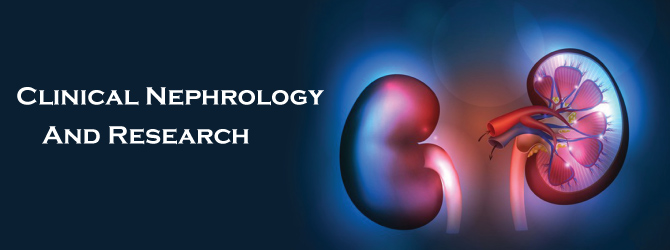
Sign up for email alert when new content gets added: Sign up
BACKGROUND: The term C3 glomerulopathy (C3G) describes renal disorders characterized by the presence of glomerular deposits composed of C3 in the absence of significant amounts of immunoglobulin (Ig). Histologic changes and predictors of renal outcome are not evaluated adequately in C3G. OBJECTIVE: To characterize clinicopathologic features and predictors of renal outcome in C3G MATERIAL AND METHODS: We retrospectively analyzed all the kidney biopsies done in the past 5 years (May 2013 to April 2018) in department of Nephrology at a tertiary care center in New Delhi. Patients fulfilling the pathologic criteria for a diagnosis of C3 glomerulopathy were included in the study. We recorded histologic, demographic, and clinical data and determined predictors of end-stage renal disease (ESRD) using the multivariate analysis. RESULTS: We identified a total of 2462 renal biopsies in past 6 years of which 34 (1.34%) were diagnosed with C3 glomerulopathy. The mean age of the patients was 35 ± 17.5 years; 53% were males. Common presentation included nephrotic syndrome (38.2%), nephritic syndrome (26.5%), and acute kidney injury (35.3%). Fifty percent patients had proteinuria >3.5 gm/24 hrs at the time of biopsy. Membrano-proliferative glomerulonephritis (MPGN) was the most frequent histological pattern (32.3%) followed by diffuse endocapillary proliferative (29.4%), mesangial proliferative (20.6%) and crescentic pattern (17.6%). Glomerular sclerosis of 50% or more was seen in 17.6% patients. C3 deposition in both mesangium and capillary wall (50%) was observed most frequently. On multivariate analysis, hypoalbuminemia (hazard ratio [HR] 1.92, p=0.031) and glomerular sclerosis >50% (HR 2.21, p=0.001) predicted progression to end-stage renal disease whereas steroid treatment (HR 0.52, p=0.01) was associated with significantly lower progression to end stage renal disease (ESRD). CONCLUSION: Our study provides a spectrum of clinicopathological features of patients with C3 glomerulopathy (C3G) and identifies predictors of progression to ESRD. This study along with other preexisting literature may be used to stratify patients to assist in initiation of appropriate therapy especially among those at high risk for ESRD.